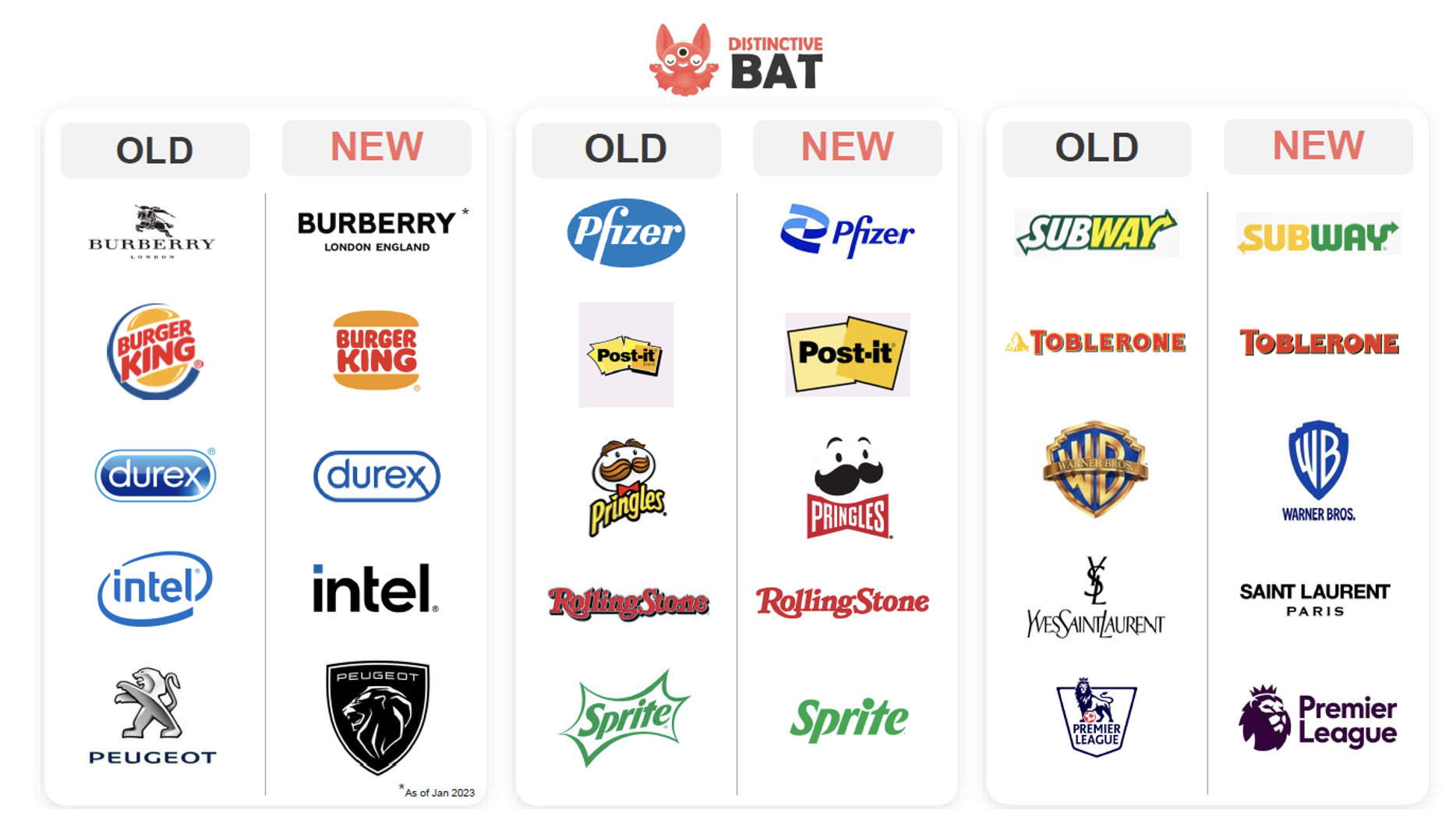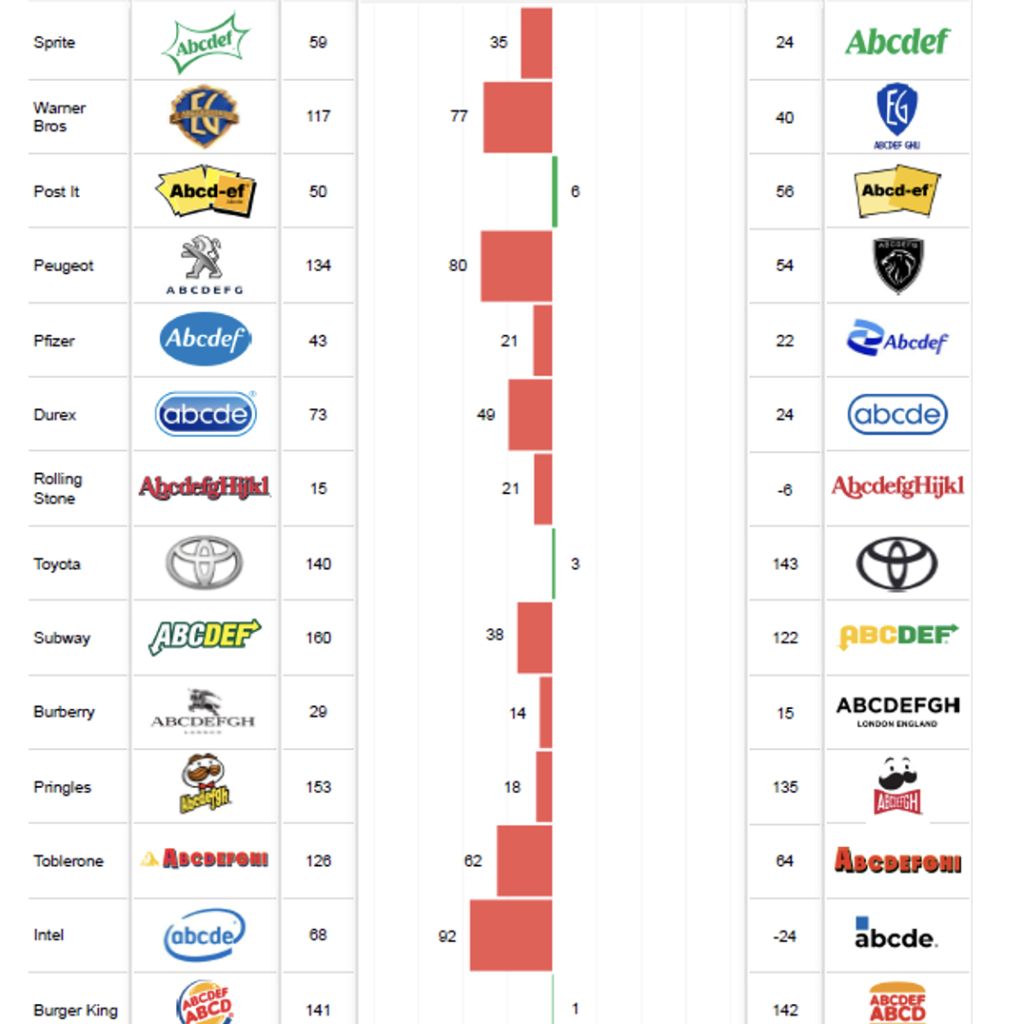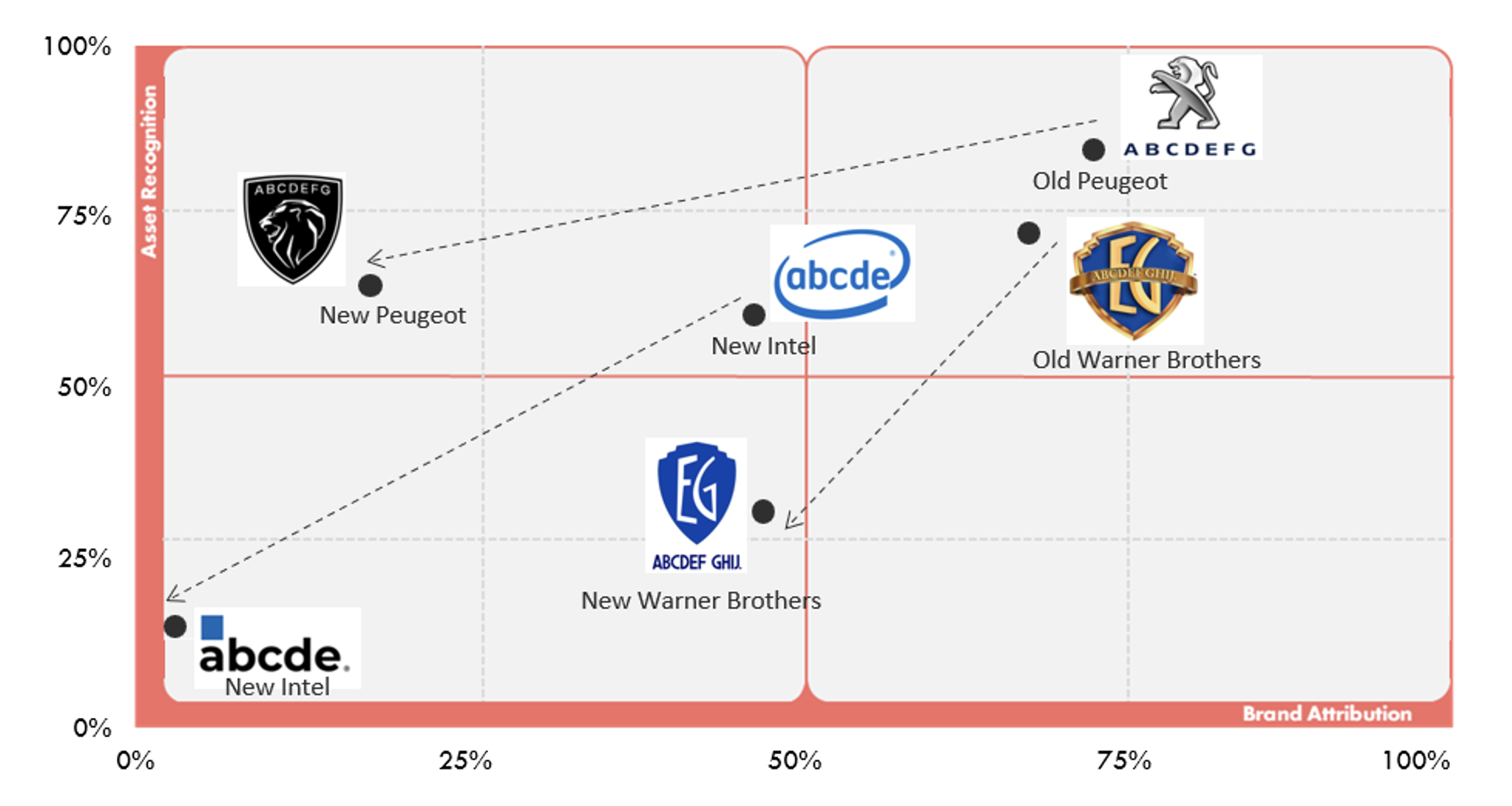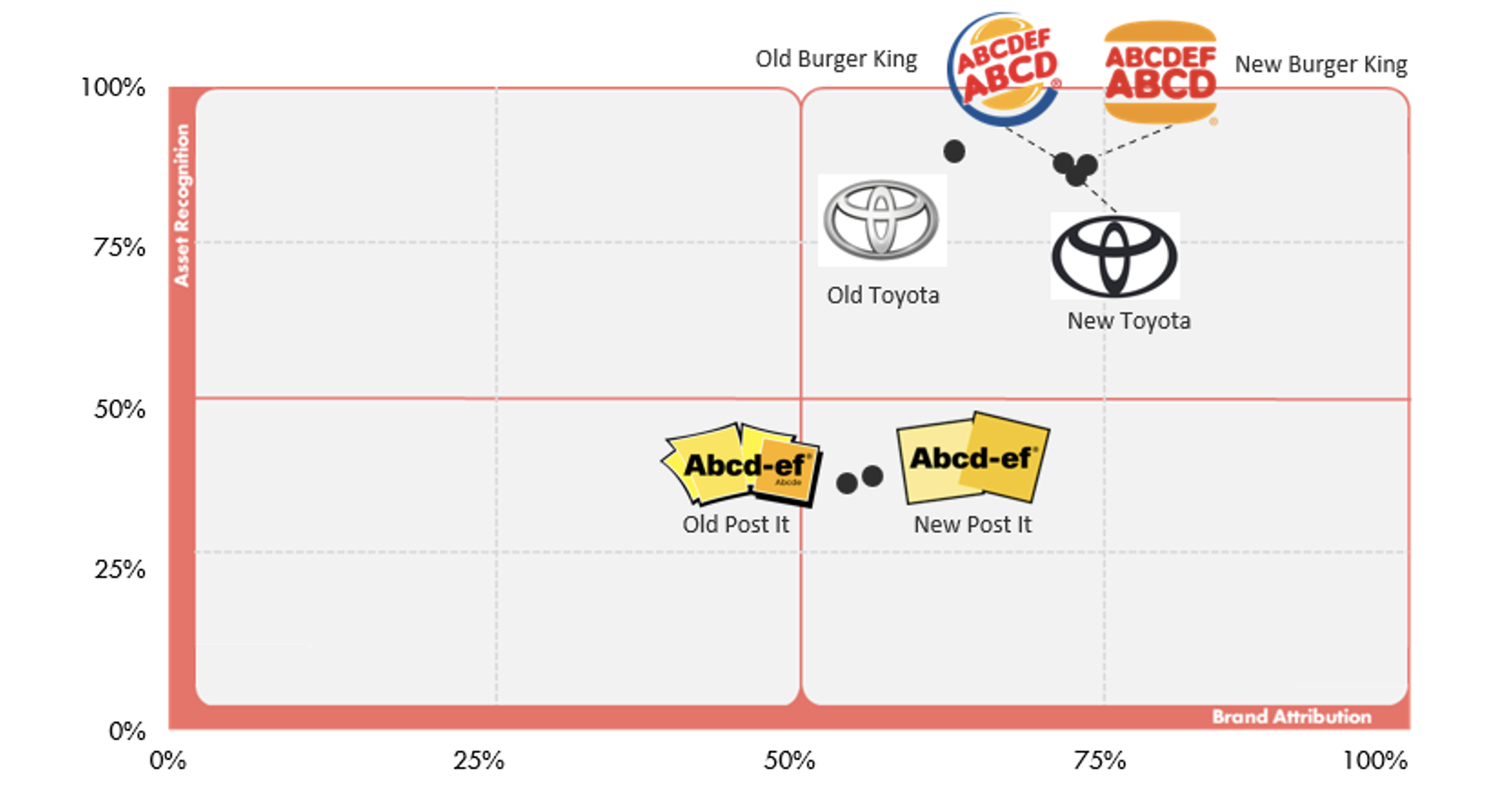Recent years has seen many brands simplify and “flatten” their logos. A common rationale is to make the logos easier to use in mobile-first digital marketing. To me, this seemed a crazy route to take. Weren’t these brands throwing away valuable brand properties, built up over years or even decades to create distinctive memory structure? Well, research by our friends at Distinctive BAT, published in WARC (1), confirms that this exactly what they have done. The changes have made the logos more bland and less brand.
In this post, we look at the research comparing the new and old brand properties (see below) and suggest how to avoid making the same mistakes.

The IMPACT of the changes: overview
The Distinctive BAT study compared the old and new logos of several brands to see how these changes affect effectiveness. Logos in the study are un-named to focus on the impact of changes to the visual devices. The score for each logo is calculated as follows:

The data below shows the dramatic impact of the changes on brand distinctiveness. The new logos are up to 90% LESS effective than the old ones. By disrupting memory structures the changes decrease the effectiveness of the branding devices at triggering recall. In a handful of cases, effectiveness has gone up, reflecting a more evolutionary approach to brand property management.

Ditching distinctive devices
The biggest drops in recognition and attribution are driven by brands ditching distinctiveness devices (see below). “While some of the new logos on the market are aesthetically more appealing, many of them throw the baby out with the bathwater,” as Distinctive BAT rightly point out:
Peugeot “has created a shield that is reminiscent of many football club emblems, while reducing the lion to just its head, albeit with more detail,” the Distinctive BAT team explain
Warner Brothers have completely flattened and simplified their logo, making their iconic shield less distinctive
Intel has got rid of its trademark “swirl”

Refreshing distinctive devices
“Remember and refresh what made you famous” is a key principle of brandgym projects and the brandgym Mastering Brand Growth program. This principle applies perfectly when it comes to brand properties. The study shows how Toyota, Burger King & Post followed this approach and saw improvements in Brand Attribution:

So, how can you avoid destroying brand equity when managing your own brand properties? The key is to “treasure and measure” your brand assets.
1.TREASURE your brand assets
Brand properties such as logos, colours, slogans and sonic devices can become valuable assets if managed strategically over time. In brandgym research, 83% of marketing directors say brand properties are extremely important in creating strong brands, with the remaining 17% saying they are important.
With consistent marketing over time these brand properties help create distinctive memory structure for your brand. This has two benefits. First, distinctiveness helps you brand get recognized in an ever more busy world. Second, these properties trigger brand meaning. They work like a key to instantly unlock brand attributes.
Action: create a process that treasures your brand assets, recognizing the key role they play in building strong brands. Ensure you have aligned and engaged the senior management in your business as part of this.
2.MEASURE your brand assets
Given how valuable brand assets are, the way they are often managed or rather mis-managed is frankly shocking. Imagine a supply chain director recommending to knock down a factory and build a new one simply because they think it’s a good idea. They would be laughed out of the boardroom or even fired for failing to back up the recommendation with hard data. However, when a new marketing director says they plan to ditch a distinctive asset like a logo or slogan on gut feel, they often get the nod of approval.
Our own brandgym research shows that a mere 24% of brand property changes are based on quantitative data. And my guess is that even this figure is over-stated. Most brand property changes are triggered by an organisational change (e.g. new marketing director) or a judgement call (see below).
Action: measure your brand assets versus your competitors, such as the IConic Asset Tracking (ICaT) we carry out projects with Distinctive BAT. Then, track these results over time with regular follow-up waves of research. Ensure any change is based on hard data, not judgement.

3.Avoid following the crowd
The examples shared here show the need to be cautious when a creative agency urges you to follow a new trend. “Designers draw inspiration from other designers, and c’est le vie a trend develops,” as Cathal from Distincive BAT says (1). “In recent years, the fashion industry has seen a strong shift toward minimalist sans-serif logos”.
Action: be careful about jumping on the next “brandwaggon” when an agency urges you to follow a new trend, such as the de-branding shown in this post.
In conclusion, brand properties need to be treasured, measured and managed just like any other form of valuable business asset. Radical changes based on judgement not data risk destroying not enhancing brand equity.
You can explore the power of brand properties in more depth on the upcoming brandgym Mastering Brand Growth program, alongside seven other modules including insight, portfolio strategy and brand stretch. We kick off on April 17th and still have a few places left.
If you’re on the blog website and would like more info on the program, simply pop your name and email in the form below (sorry, form does not show properly in the Monday morning email)
SOURCES:
